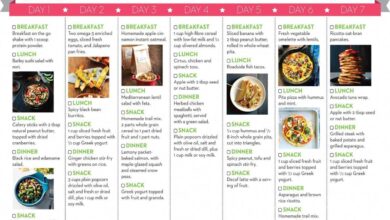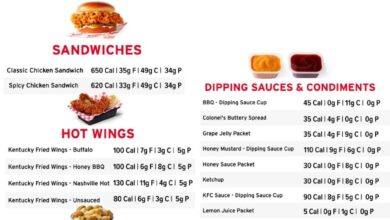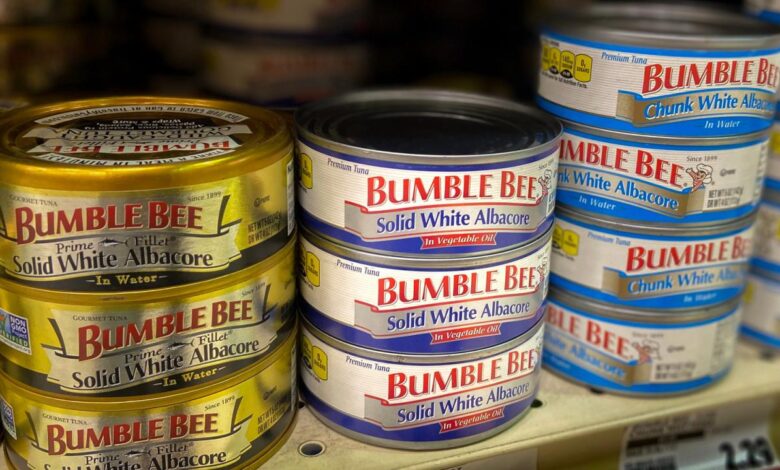
4 Things to Know About Buying Canned Tuna
4 Things to Know About Buying Canned Tuna: Canned tuna is a pantry staple, but with so many options available, it can be overwhelming to know which one to choose. From understanding the different types to considering sustainability and nutritional value, there’s a lot to learn about this versatile ingredient.
Let’s dive in and explore the key factors to consider when buying canned tuna.
Whether you’re a seasoned chef or a beginner in the kitchen, choosing the right canned tuna can make a world of difference in your dishes. Understanding the different types of tuna, their flavor profiles, and their nutritional value can help you make informed decisions that align with your culinary needs and dietary preferences.
Types of Canned Tuna: 4 Things To Know About Buying Canned Tuna
Navigating the canned tuna aisle can feel overwhelming with all the different options. Understanding the various types available helps you choose the right one for your needs and recipes.
Types of Canned Tuna
Canned tuna is typically categorized based on the part of the fish used and its processing method.
When choosing canned tuna, pay attention to the type of tuna, the mercury levels, the packaging, and the sustainability practices of the brand. Sometimes, making these decisions can be stressful, but remember that even small changes can make a difference.
If you’re feeling overwhelmed, take a few minutes to check out these 8 quick ways to reduce stress right now. After a quick breather, you’ll be ready to tackle your next grocery shopping trip and make informed choices about your canned tuna.
- Light Tuna:This is the most common type of canned tuna, made from the lighter muscle of the tuna, often including a mix of white and dark meat. Light tuna tends to have a milder flavor and a slightly softer texture, making it versatile for various dishes.
- White Tuna:This type comes from the white muscle of the tuna, known as the loin, and is considered a premium variety. White tuna boasts a firmer texture and a more pronounced, slightly sweet flavor, often making it a preferred choice for salads and sandwiches.
- Chunk Tuna:As the name suggests, chunk tuna features larger pieces of tuna that are ideal for salads, sandwiches, and recipes where the tuna is the star ingredient. It offers a good balance of flavor and texture.
- Solid Tuna:This type consists of whole tuna fillets that have been packed in oil or water. Solid tuna offers a firm texture and a rich flavor, perfect for salads, sandwiches, or even grilling.
Tuna Quality and Sustainability
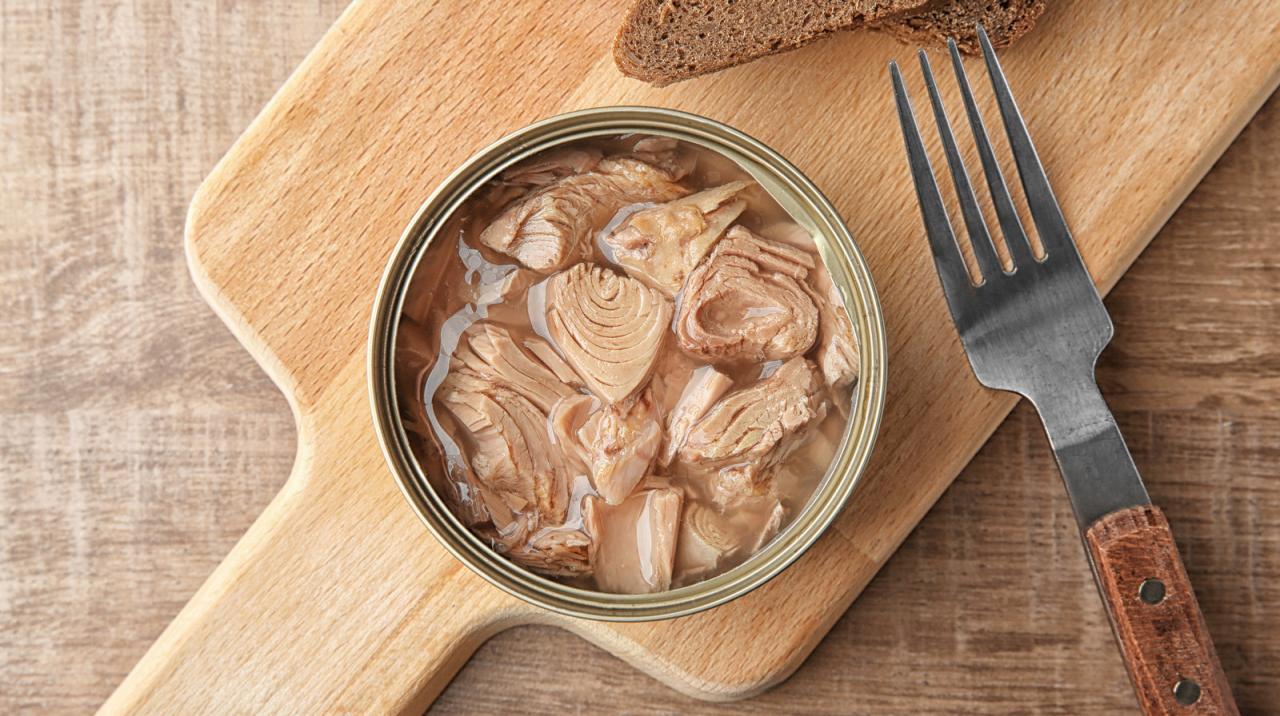
Choosing canned tuna isn’t just about taste; it’s about making a conscious decision for the health of our oceans and the future of tuna populations. Sustainable fishing practices are crucial to ensure that we can enjoy tuna for generations to come.
Sustainable Fishing Certifications
Knowing how to identify sustainably caught tuna is essential. Fortunately, several organizations offer certifications and labels that can help you make informed choices. These certifications indicate that the tuna was caught using methods that minimize environmental impact and promote responsible fishing practices.
When choosing canned tuna, consider factors like mercury levels, sustainable fishing practices, and whether you prefer light or white meat. But hey, if you’re looking for a delicious and seasonal treat, you can always grab some pumpkin-flavored snacks at Trader Joe’s – check out this list of 8 RD-approved options ! Then, you can pair your pumpkin goodness with your tuna for a satisfying and balanced meal.
- Marine Stewardship Council (MSC):The MSC is a global non-profit organization that sets a standard for sustainable fishing. Tuna products bearing the MSC label have been caught using methods that protect the long-term health of fish stocks and marine ecosystems. Look for the blue MSC label on cans of tuna to ensure you’re buying from a sustainable source.
When buying canned tuna, consider the type of tuna, the packing method, the mercury content, and the sustainability of the brand. But if you’re looking for some Thanksgiving inspiration, check out 5 ways to fill your thanksgiving table with color for some vibrant ideas! Back to tuna, remember that light tuna is generally lower in mercury than albacore, and look for sustainable options like pole-caught or line-caught tuna.
- Dolphin Safe:This label indicates that the tuna was caught using methods that don’t harm dolphins. While not directly related to sustainable fishing practices, it is a crucial factor in protecting marine life. The “Dolphin Safe” label ensures that the tuna was caught using fishing techniques that minimize the risk of dolphin bycatch.
The Impact of Overfishing
Overfishing poses a significant threat to tuna populations. When tuna are caught faster than they can reproduce, their numbers decline, disrupting the delicate balance of marine ecosystems. Overfishing can lead to:
- Declining Tuna Populations:Overfishing can lead to a drastic reduction in tuna populations, impacting the entire marine ecosystem.
- Ecosystem Imbalances:Tuna play a crucial role in the marine food web. Their decline can have cascading effects on other species, disrupting the natural balance of the ecosystem.
- Economic Impacts:Overfishing can have negative economic consequences for fishing communities and industries that rely on tuna as a source of income.
“Sustainable fishing is essential for ensuring the long-term health of our oceans and the future of tuna populations.”
Nutritional Value and Health Benefits
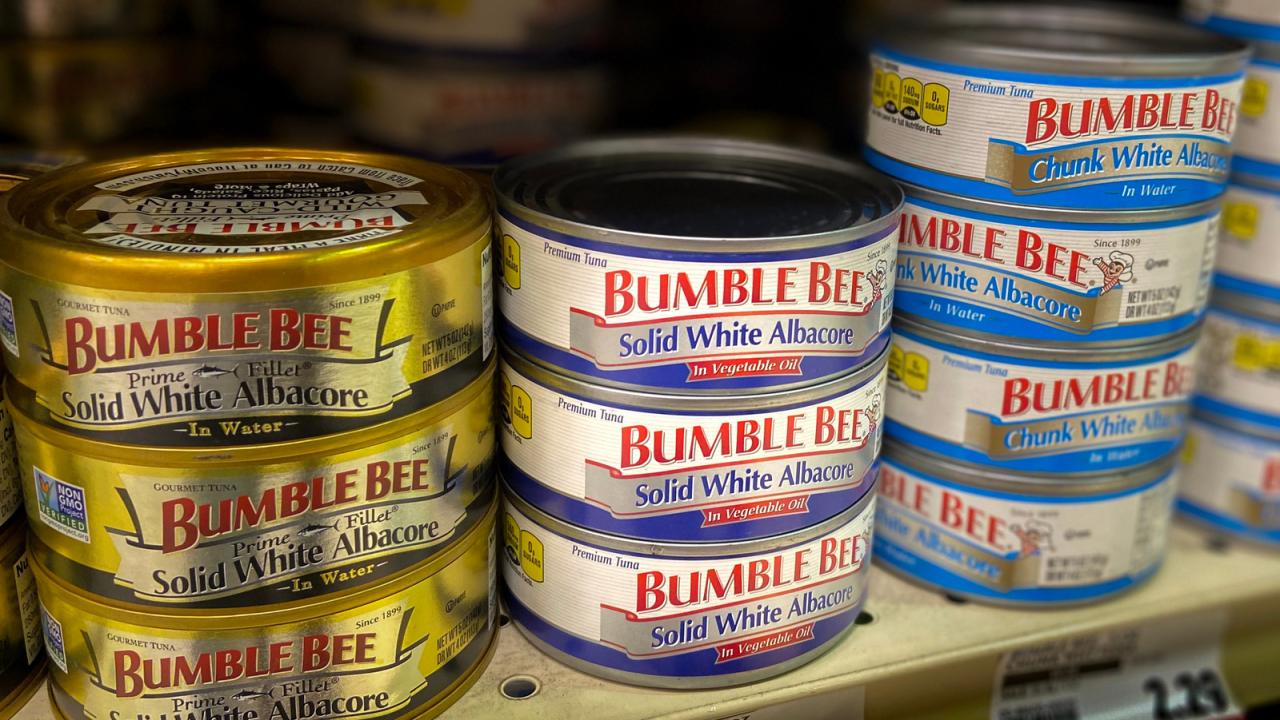
Canned tuna is a nutritional powerhouse, packed with essential nutrients that benefit your health. It’s a versatile and convenient food that can be incorporated into various meals and snacks.
Nutritional Content of Canned Tuna
Canned tuna is a good source of protein, omega-3 fatty acids, and various vitamins and minerals. A typical 3-ounce serving of canned tuna provides:
- Protein:Around 20 grams of protein, making it a great source for building and repairing tissues.
- Omega-3 Fatty Acids:Tuna is rich in EPA and DHA, essential fatty acids that support heart health, brain function, and reduce inflammation.
- Vitamins:Tuna is a good source of Vitamin D, which plays a vital role in bone health, immune function, and cell growth. It also contains niacin, vitamin B12, and selenium, all crucial for various bodily functions.
- Minerals:Tuna is a good source of potassium, which helps regulate blood pressure and muscle function. It also contains phosphorus, magnesium, and iron, essential for bone health, energy production, and red blood cell formation.
Health Benefits of Consuming Tuna, 4 things to know about buying canned tuna
Regular consumption of canned tuna can provide numerous health benefits:
- Heart Health:The omega-3 fatty acids in tuna can help lower triglyceride levels, reduce blood pressure, and improve blood vessel function, contributing to overall heart health.
- Brain Function:Omega-3 fatty acids are essential for brain development and function. Consuming tuna can help improve cognitive function, memory, and mood.
- Reduced Inflammation:Omega-3 fatty acids have anti-inflammatory properties that can help reduce inflammation throughout the body, potentially reducing the risk of chronic diseases.
- Weight Management:Tuna is a low-calorie, high-protein food, making it an excellent choice for weight management. The protein content helps you feel full and satisfied, reducing cravings and overeating.
Mercury Content in Tuna
While tuna is a nutritious food, it’s important to be aware of the potential for mercury accumulation. Tuna is a predator fish, and it can accumulate mercury from its diet. High levels of mercury can be harmful, particularly for pregnant women, nursing mothers, and young children.
The FDA recommends limiting consumption of tuna to 12 ounces per week for adults and 4 ounces per week for children.
Choosing light tuna over albacore tuna can help reduce mercury intake, as light tuna has lower mercury levels.
Creative Ways to Enjoy Canned Tuna
Canned tuna is a versatile ingredient that can be incorporated into a wide array of dishes, adding flavor and protein to your meals. Its convenience and affordability make it a staple in many kitchens. From classic tuna salad sandwiches to innovative culinary creations, the possibilities are endless.
Creative Tuna Recipes
Here are some creative recipes that showcase the versatility of canned tuna:
| Recipe | Ingredients | Preparation |
|---|---|---|
| Tuna and Avocado Salad |
|
|
| Tuna Pasta Salad |
|
|
| Tuna Tacos |
|
|
| Tuna and Black Bean Burgers |
|
|
Last Word
Canned tuna is a versatile ingredient that can be enjoyed in countless ways. By understanding the different types, considering sustainability, and being mindful of its nutritional value, you can make informed choices that satisfy your taste buds and nourish your body.
So, next time you’re at the grocery store, take a moment to browse the canned tuna aisle and discover the world of flavors and possibilities waiting for you.

